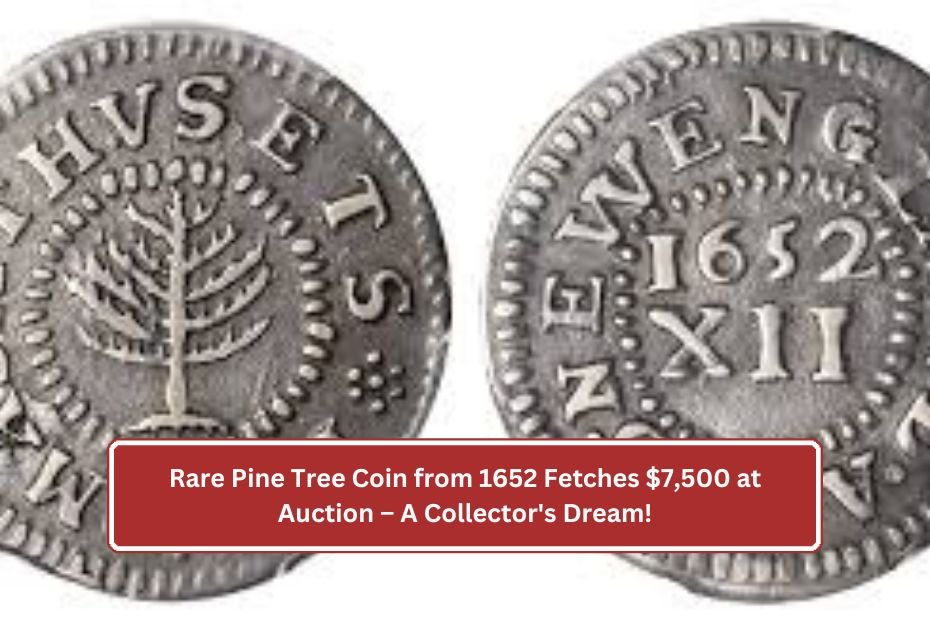Coins can be worth much more than their face value, especially if they have unique features or a rich history. One such coin, minted in Massachusetts in 1652, is an excellent example. Even if it is slightly off-center or missing letters, this coin recently sold for a stunning $7,500! In this article, we will explore what makes this colonial-era coin so special and valuable, and how to recognize if you have one.
What Is the Pine Tree Coin?
The Pine Tree coin is a colonial-era coin known for its distinctive pine tree design. This particular coin was minted in 1652, making it older than the United States itself! It represents a time when Massachusetts was a colony and serves as a fascinating piece of history.
Key Features of the Coin
| Feature | Description |
|---|---|
| Design | Front features a prominent pine tree |
| Year Minted | 1652 |
| Origin | Massachusetts |
| Value | Sold for $7,500 |
| Missing Letters | Some letters on the front are cut off |
| Back Inscription | “New England” and the date |
Grading and Valuation
Grading is essential for determining a coin’s value. The Pine Tree coin mentioned above was graded at XF-40. This means it has lost some of its original luster but still displays visible details. Coins are typically graded on a scale of 1 to 70, with 1 being the lowest grade and 70 being the highest. Most valuable coins fall within the 60 to 70 range, known as Mint State coins.
Recent Auction Success
On August 12, this unique coin was sold at auction for $7,500. Despite its imperfections, the historical significance and unique design of the coin made it a highly sought-after item among collectors.
Why Are Old Coins Valuable?
Old coins, especially those with unique features or historical significance, can fetch thousands of dollars. Here are some reasons why old coins are valuable:
| Reason | Explanation |
|---|---|
| Historical Significance | Coins from colonial times connect to American history. |
| Minting Errors | Coins with errors can be worth significantly more than intended. |
| Rarity | Fewer existing coins increase their value. |
How to Identify Valuable Coins
If you think you might have a valuable coin, here are some tips on how to check its worth:
- Look for the Date: Check if your coin is from the right year. The Pine Tree coin should be dated 1652.
- Inspect the Design: Examine the coin for unique designs like the pine tree and any missing letters.
- Get It Graded: Consider having the coin graded by a professional service. A higher grade can significantly increase its value.
Conclusion
Finding a unique and historically significant coin can be an exciting experience. The Pine Tree coin from Massachusetts is a perfect example of how old coins can be worth much more than their face value. Even with minor imperfections, such as being off-center or having missing letters, it can still command a high price at auction. By understanding what makes these coins special and how to identify them, you can become a savvy collector. Whether you have a rare coin or are simply curious about coin collecting, the world of numismatics has something for everyone.
FAQ’s
What is the Pine Tree coin and why is it valuable?
The Pine Tree coin is a colonial-era coin minted in Massachusetts in 1652. It features a pine tree design and can be worth a lot of money due to its historical significance, rarity, and unique minting errors. One recently sold for $7,500!
How can I tell if my coin is a Pine Tree coin?
To identify a Pine Tree coin, look for the year “1652” and the design featuring a prominent pine tree. Check if any letters are missing on the front. If you think you have one, consider getting it graded by a professional to determine its value.
What affects the value of a coin?
The value of a coin can be affected by several factors, including its age, rarity, condition, historical significance, and any minting errors. Coins in better condition and with unique features usually sell for higher prices at auctions.

